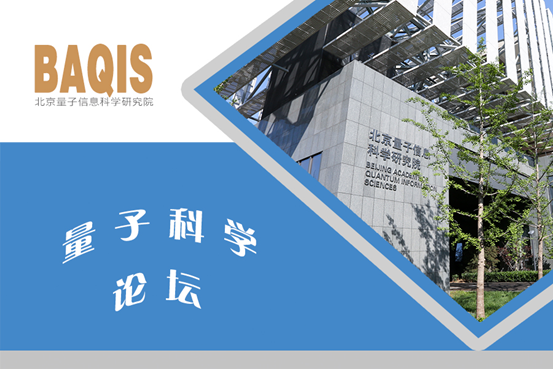BAQIS Quantum Science Forum 83: Imaging putative Majorana modes and quasiparticle poisoning in superconducting vortices
2023/03/02

Date and Time: 2-March-2023 15:30
Speaker: Dr. Jianfeng Ge (Leiden University)
Host: Kai Chang( BAQIS)
Title: Imaging putative Majorana modes and quasiparticle poisoning in superconducting vortices
Abstract:
For a superconductor in the vortex state, quasiparticles can localize as bound states in the vortex cores where the superconducting order parameter vanishes, but they can also escape the cores. Understanding localized quasiparticles, such as distinguishing between Majorana and trivial vortex bound states, is one of the prime tasks in quantum condensed matter physics, since Majorana bound states are predicted as promising candidates for error-resistant qubits. On the other hand, tracing the delocalized quasiparticles is crucial in minimizing quasiparticle poisoning of Majorana bound states for applications in topological quantum computing. Local shot noise measurements have been suggested to distinguish different vortex bound states, and more generally, as a probe into vortex physics, but despite much theoretical work, no local measurement of the shot noise of a vortex core exists.
In this talk, I will show the first local shot-noise spectroscopy to study the tunneling process into the vortex cores of both a conventional superconductor NbSe2 and the putative Majorana platform FeTe0.55Se0.45. We find that tunneling into vortex bound states in both cases exhibit charge transfer of a single electron charge. Our data for the zero-energy bound states in FeTe0.55Se0.45 excludes the possibility of Yu-Shiba-Rusinov states and is consistent with Majorana bound states. However, it is also consistent with trivial vortex bound states. In the second part of my talk, I will show the first image of delocalized quasiparticles around vortices in NbSe2 by scanning tunneling noise microscopy. From shot-noise imaging, we extract spatial variation of the effective charge when tunneling into the vortex state, which can be understood within the Ginzburg-Landau model. Furthermore, we find that quasiparticle poisoning dominates when vortices are less than 4 times the coherence length apart. Our results call for further theoretical investigations taking into account dynamics and superconducting tips, and open a new avenue for investigating the exotic states in vortex cores and for future Majorana devices.
About the Speaker:
Jianfeng Ge received his Ph.D. from Shanghai Jiao Tong University in 2016. From 2016 to 2019, he went to Harvard University to do postdoctoral work. Since 2019, he has been working as a postdoctoral fellow at Leiden University in Netherlands. His main research directions are topology, superconducting quantum materials, and emerging measurement technologies based on scanning tunneling microscopy; he has published 10 academic papers in journals such as Nature Materials, Science, and PRL.
 中文
中文 Email
Email QCloud
QCloud Log in
Log in
